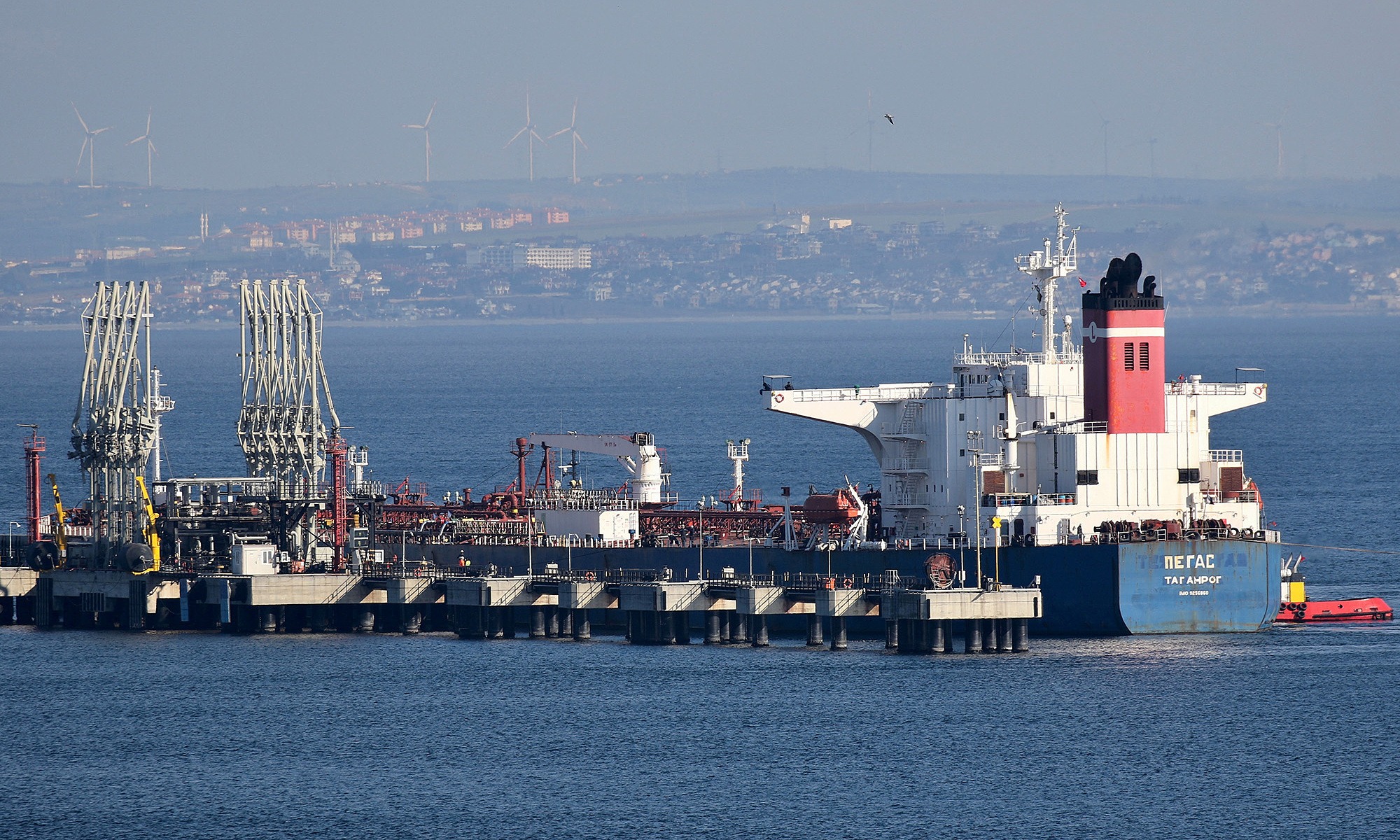On 11/7, the European Commission (EC) proposed a floating price cap mechanism for Russian oil exports. The cap would be set 15% below the average global crude oil price over the preceding three months and adjusted quarterly, according to Reuters sources in Europe.
The sources said details of the proposal are still being discussed. However, it seems to have eased concerns for EU nations dependent on maritime transport, such as Malta, Greece, and Cyprus.
 |
The Russian-flagged oil tanker Pegas in Marmara Ereglisi, Turkey, on 16/1/2022. Photo: Reuters |
The Russian-flagged oil tanker Pegas in Marmara Ereglisi, Turkey, on 16/1/2022. Photo: Reuters
The EU and G7 currently have a $60 price cap on Russian crude oil exports. Refined oil products remain subject to two price caps – $45 and $100 (depending on the product) – implemented in 12/2022 and 2/2023, respectively, following the Russia-Ukraine conflict.
Under the sanctions, shipping and insurance companies in these countries are prohibited from servicing Russian oil exports sold above $60. This policy aims to restrict Russia's revenue without disrupting global fuel flows.
For the past two months, the EU and the UK have urged the G7 to lower the cap. The reason is the recent downward trend in global oil prices, rendering the $60 cap less effective. Brent crude closed this week at $70 a barrel, while Russia's Urals oil was only $58.
Despite European leaders' efforts, the US government has not agreed to lower the cap, leading Europe to explore unilateral action.
In June, the EC first proposed lowering the cap from $60 to $45 a barrel. This provision would be included in the bloc's 18th sanctions package against Russia.
On 11/7, the Kremlin said it had experience dealing with challenges like a floating oil price cap. In recent years, Russia has actively shifted its energy sales from the West to Asia, maximizing the use of its older fleet to transport crude oil.
Ha Thu (Reuters)












